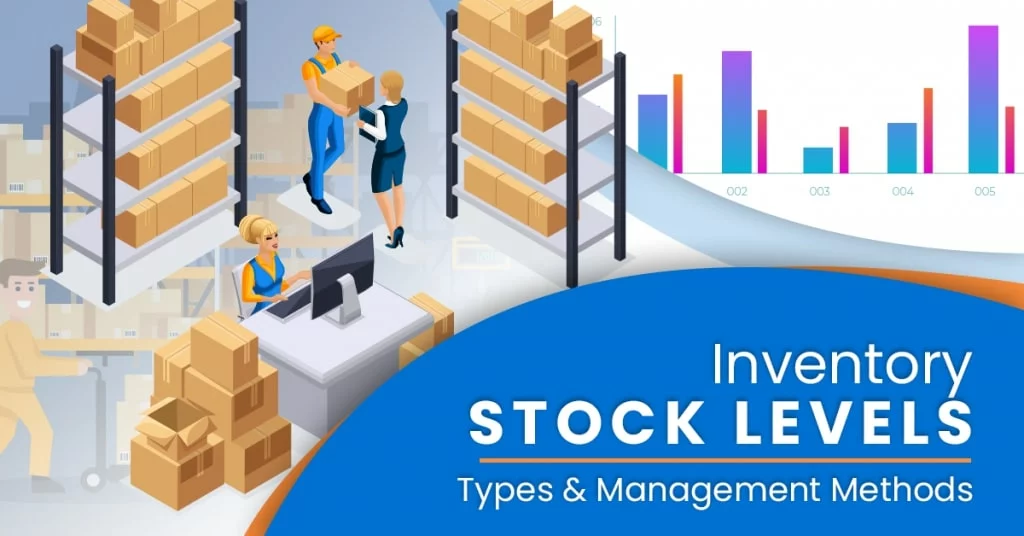Understanding the optimal inventory levels is a crucial factor for streamlining your logistics operations. Maintaining the correct stock quantities in your warehouse plays a pivotal role in cost reduction and guarantees timely order processing.
In order to promote efficient and error-free logistics processes within your integrated supply chain, it becomes imperative to regularly assess the inventory levels within your facility. An overabundance of products can result in increased expenses, whereas insufficient inventory may lead to stockouts, causing potential delays in fulfilling orders.

What are inventory levels?
Inventory levels refer to the amount of products a company has in its various locations, like warehouses, stores, and distribution centers. These levels are essential for managing stock efficiently, ensuring that you have enough products to meet demand without excess or shortages.
Conducting a thorough analysis of your inventory levels, including cycle stock, is paramount for an effective stock management strategy within your integrated supply chain. The ideal stock levels are those that optimize your facility’s performance while mitigating unnecessary storage costs. Logistics managers should possess precise knowledge of the necessary stock quantities for each SKU, including cycle stock, to fulfill all customer orders promptly, thus preventing any potential backorders.
It’s important to note that the ideal stock quantities, including Economic Order Quantity (EOQ) can fluctuate over time, especially in businesses dealing with highly seasonal products. In such cases, logistics managers should conduct regular assessments of SKU turnover and demand, ensuring that inventory levels are adjusted accordingly to accommodate changes within their integrated supply chain.
Determining the optimal inventory levels can be a complex endeavor, especially in situations where sales are on the rise, product portfolios are expanding, or new market entries are being considered.

What are minimum and maximum inventory levels?
To determine the right inventory level, you need to consider these key factors:
- Minimum Stock Levels: This is the lowest quantity of products you must keep in storage to fulfill all orders. It acts as a safety net to prevent running out of stock and causing stockouts.
- Maximum Stock Levels: This represents the highest amount of goods you can store without incurring unnecessary warehousing costs. Going beyond this limit may lead to overstock issues and potential storage space shortages.
It’s essential to distinguish optimal inventory levels from average inventory levels, which estimate the number of goods in your facility over a specific time frame.

Optimal inventory level: factors to take into account
When determining the ideal inventory levels for your business, you need to consider factors like storage costs and the time needed to handle products. Increasing the stock in your facility can lead to higher logistics expenses. Conversely, maintaining appropriate inventory levels enhances warehouse operations. It streamlines the movement of goods, simplifies the supply chain, and ensures better access to products.
Optimal inventory levels contribute to efficient logistics. Keeping inventory to a minimum helps identify inefficiencies more easily, preventing issues like product turnover errors and delivery delays.
However, expanding into new sales channels adds complexity to determining the right inventory levels. According to a McKinsey survey, “higher overall stock levels have become the norm,” prompting businesses to seek ways to “ensure resilience while keeping inventory costs under control.” Inventory levels are now a major concern, with 58% of respondents prioritizing inventory optimization.

Digitisation to optimise inventory levels
Businesses are using digital tools to make their supply chain planning and operations better. Instead of manually controlling goods, they use a warehouse management system (WMS) to track inventory in real time.
The WMS (Warehouse Management System), integrated with PLC automation, records everything that comes in and goes out, as well as how goods move. This gives logistics managers clear data to figure out the right inventory levels. For example, they can see which products are in high demand and make sure they always have them, thanks to the efficiency of PLC automation. This helps avoid running out of stock and causing delays.
The software also looks at how fast products are sold to figure out the best inventory levels, with the assistance of PLC automation with this data, the program plans buying stuff so the business always has what it needs to fill orders efficiently within the integrated supply chain.
Handling a lot of items is hard on its own. When you have stock in many places, it’s even harder. Businesses with inventory in multiple locations can use cloud-based logistics software to manage it all. This means people can access the system from anywhere with an internet connection. The software also makes tasks in each warehouse better and keeps an eye on moving stock between them.

Target inventory levels for balanced logistics operations
In today’s world, where sales are growing worldwide, and there are more and more different products to manage in storage facilities, keeping track of your stock has become quite a challenge. To make sure orders are filled on time and your warehouse runs smoothly, it’s crucial to have the right amount of inventory.
If you’re looking to improve your supply chain and make it more efficient, reach out to Top Industries Inc. our experts have helped many businesses around the globe get their inventory levels just right and enhance their logistics operations.

People also ask
An example of inventory level is the number of pallets a warehouse has in stock.
You determine inventory levels by conducting regular stock counts, tracking sales and purchases, and using inventory management software to maintain accurate records.
A good inventory level is one that strikes a balance between meeting customer demand without overstocking or understocking. It’s typically based on historical sales data and demand forecasting to avoid excess costs or shortages.
The four types of inventory are raw materials, work-in-progress (WIP), finished goods, and MRO (maintenance, repair, and operations) items.
